


Health
It's very important to study about human health. It deals with our lives in enumerable ways from our daily lives to our longevity. Scholars and experts have given speeches and wrote eloquent books on the importance of health too. Massive studies have debated the diverse health issues of the day. Congress debating the health care issues presents the truth about health in dealing with our everyday lives. From Flint to the proposed oil pipeline in North Dakota, we are fighting injustices. More and more human beings are conscious about the human body. The human body is glorious and requires vitamins and other crucial nutrients in order for it to functions properly. Health revolves around more than just the body. It also deals with the environment and other components of existence. That is why it is important to promote exercise and respect for our diverse body shapes. The reason is that humanity is beautiful in many different sizes, shapes, and hues. Heroic people have promoted respect for their neighbors and inspirational words for a long time.
Health is not just about us walking around or living in the Universe. Health revolves around the food that we eat and the environment that we live. For generations, scholars have documented how pollution can cause damaging effects to human and animal life. That is why during the 1960's, federal laws grew into the next level in address massive air pollution in the cities, towns, and rural locations of the Earth. The Great Society, to its credit, involve many laws that address environmental issues from air quality to endangered animal species. The Clean Air Act contributed to improvements in our air quality nationwide. Likewise, we have a long way to go. We have floods in the world, we have climate change, and we live in a time where environmental health problems are still commonplace. Not to mention that people international suffer health related ailments which require our personal compassion. We are all our Brother's and our Sister's Keepers. When one person is hurting (regardless of his or her background), then we all hurt. That is why it is always important to fight for justice not only for us (who live in America). We want justice to spread worldwide and throughout the Universe. So, learning about health is always a blessing since it relates to building a better civilization for us and for our posterity. Health deals with the improvement of life and we love the wonder and the intrinsic value of life.

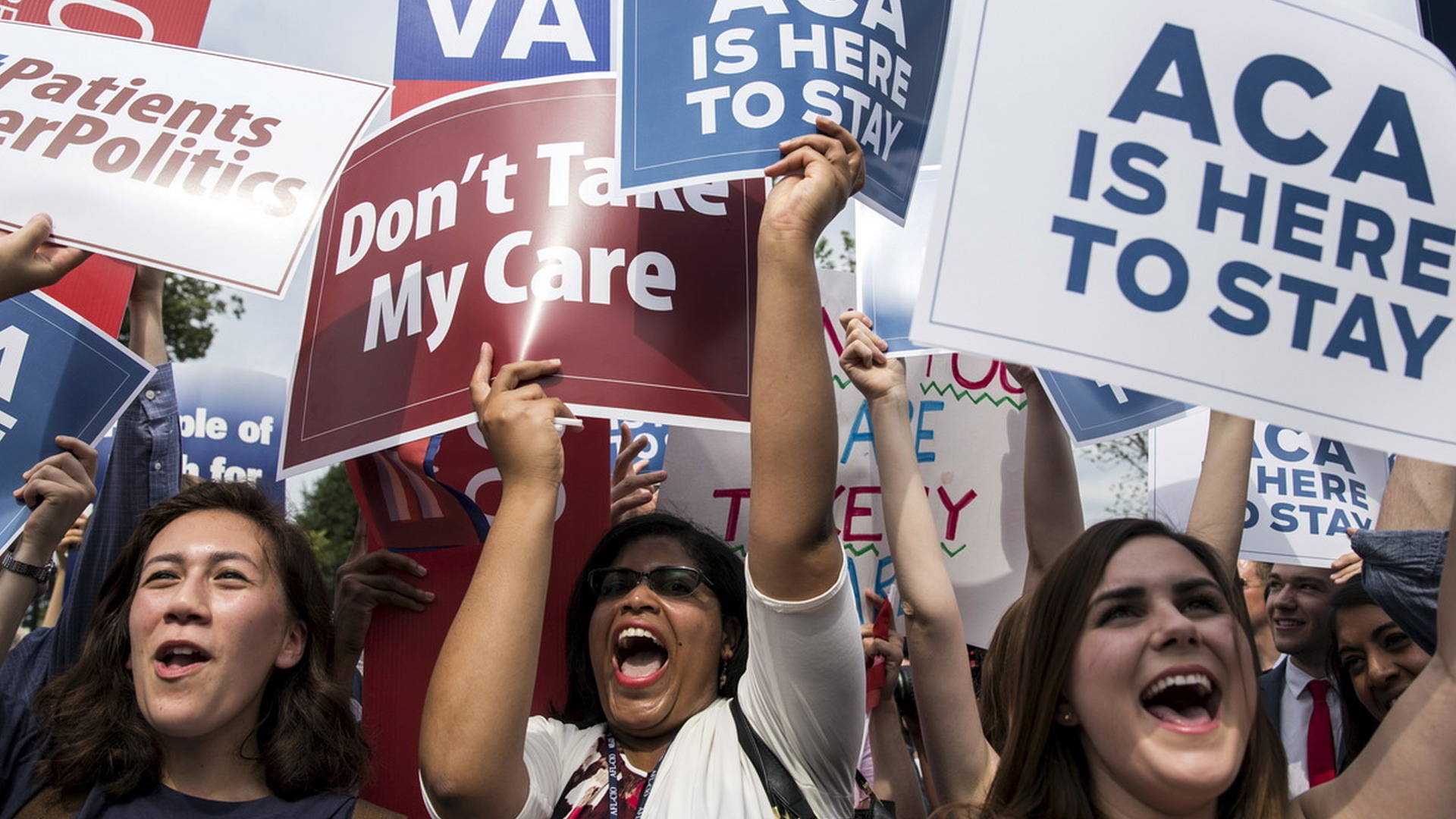
Our Health Care
Our health care is important to maintain and preserve forever. Health care is a human right. The ACA was created in 2010 and the proposed Senate bill is a whole lot worse than the ACA. I have my disagreements with certain aspects of the ACA, but the GOP Senate health care is straight up cruel and horrendous. This issue is literally about life and death, because many people struggle to make payments on premiums. There are many big corporations who refuse to make affordable care available to people. You have many people with disabilities using civil disobedience because of the crisis that we face. In the final analysis, massive cuts to Medicaid and massive tax cuts to the wealthy (including taking health care from many seniors) as proposed in the Senate bill is literally abhorrent. The good news so far is that the Senate so far hasn’t passed such a cruel bill (which is called the Better Care Reconciliation Act or BCRA). It has been the dream of many GOP members to end the Affordable Care Act. Protesters continue to be brave. On June 22, 2017, dozens of activists (which was organized by the disability rights group of ADAPT) staged a protest outside of Senate Majority Leader Mitch McConnell’s office. The U.S. Capitol Police forcibly removed the protesters. Some of the protesters were in wheelchairs and laid on the ground as part of the demonstration. 43 people were arrested. This is a real struggle for universal health care. There is the horrible image of armed police dragging a disabled woman from her wheelchair. As it did with the AHCA (or Trump's House bill), the nonpartisan Congressional Budget Office (CBO) analyzed the Senate bill for its projected effects over the next 10 years. The CBO's assessment of the AHCA indicated that the bill would leave an additional 23 million people without insurance by 2026 (compared to projections if Obamacare were to remain in effect).
If, instead, the Senate's new proposal was to become law, the CBO's analysis suggests that the increase in the uninsured over projections under the current law would be 22 million people. The core of both bills is a drastic assault on the government's Medicaid health care program for the poor, reversing the expansion under Obama's ACA. The Senate bill proposes somewhat smaller, though still enormous, cuts to Medicaid--$772 billion over 10 years compared to $834 billion in the House plan. But the Senate's BCRA calls for substantially larger reductions in funds for subsidies for people who purchase non-group insurance--a $408 billion cut compared to $276 billion slashed by the House version. As a result, the Senate proposal actually goes further in slashing aid for the needy than the House did. The NY Times reported that the poor, the sick, and the elderly fare worst by the BCRA. The Senate bill allows states to decide which health benefits are considered “essential.” That is a problem since states can potential charge higher premiums in some coverages. Under the new Senate plan, people who attempt to buy insurance after going 63 days without coverage will not be forced to pay a surcharge--but instead will have to wait six months before coverage will take effect. That is cruel. Many Republicans are overt in their goals of ending social programs from the New Deal and the Great Society (which has saved the lives of millions of Americans for decades). Extremists like Rand Paul of Kentucky wanted even more extreme proposals to eliminate health care services. The Koch Brothers want the ACA to be repealed. Tons of people want health care to be universal. That is why grassroots protests in confronting reactionary politicians exit in town halls nationwide. A universal health care system is a compassionate solution. In California, the state Senate overwhelmingly passed legislation to create a single-payer system for all residents--but the leader of the Democratic-controlled State Assembly announced he would refuse to allow the measure to come to a vote. That’s a shame. Health care is a human right that must come for all.


Muscle Groups
In health, the muscle groups have a wide spectrum of purposes for the human body in general. People exercise and study those muscle groups constantly. There are many muscle groups. The main ones can be between 7 to 11. Weight training programs are key in developing the muscle groups too. Improving the muscles can prevent injures, establish better posture, get rid of aches and pains, get people stronger quicker, and build muscles faster. Also, it is important to note that muscle groups exist in the lower body and working on the lower body is very important just like working on the upper body. The 4 large muscles that made up the front of the thigh are made up of the quadriceps. They are worked in squats, lunges, barbell hack squats, and other squat variations. The hamstrings were on the back of your thighs. Squats can improve them. Also, deadlifts and pull thrus can strengthen the hamstrings too. The calves are part of the muscles that are found in the legs. The gastrocs, the soleus, and the tabialis anterior are found in the calf. The pectoral muscles are found in the chest. Bench presses, dips, and pushups readily help the pectoral muscles in the chest (for men and women). The shoulders are one of the most important muscle groups. They are found in the deltoids too. There overhead press can help the shoulder muscles from the front deltoids, side deltoids, and the rear deltoids. The triceps make up about 2/3 of the upper arm. Biceps only make up about 1/3 of the upper arm. The triceps are found on the bottom of the upper arm. Dips, reverse grip bench press, and compound exercises can strengthen the triceps. Biceps are found in the top of the upper arms. Rows, chin ups, and pull ups can improve the biceps. Forearms can be improved upon via gripping barbells and dumbbells. The trapezius or traps are found in the upper back muscles. It makes a triangle shape with the point in the middle of your upper back. Deadlifts enhance the trapezius. The Abs is found in the stomach. Usually, the abs is improved by eating healthy and cardio workouts consistently.

The framework of the human skeleton is complex. There are about 305 bones at birth. This decreases to about 206 bones at adulthood. This comes about by bones fusing together over time. The maximum density of the bones of the human body comes about by the age of 21. There are different parts to the skeleton too. The axial skeleton is formed by the vertebral column, the rib cage, the skull, and related bones. The vertebral column has 32-34 bones. The number of vertebrae differs from human to human as the lower 2 parts. The sacral and coccygeal bone can vary in length. The rib cage is made up of 12 pars of ribs and the sternum. The skulls have 22 bones and 7 associated bones. The upright posture of humans is maintained by the axial skeleton, which transmits the weight from the head, the trunk, and the upper extremities down to the lower extremities at the hip joints. The bones of the spine are supported by many ligaments. The erector spinae muscles are also supporting and are useful for balance.
The appendicular skeleton is attached to the axial skeleton. That is formed by shoulder girdle, the pelvic girdle, and the bones of the upper and lower limbs. The appendicular skeleton (126 bones) is formed by the pectoral girdles, the upper limbs, the pelvic girdle or pelvis, and the lower limbs. Their functions are to make locomotion possible and to protect the major organs of digestion, excretion and reproduction. The human skeleton has many functions. They act as support, movement, protection, production of blood cells, storage of minerals, and endocrine regulation. The skeleton supports the body and maintains its shape. The pelvis works with the ligaments and muscles to provide a floor for the pelvic structures. Lungs are held together by the rib cages, costal cartilages, and intercostal muscles. The joints between muscles allow for movement. The ball and socket joint allows a greater range of movement than the pivot joint at the neck. Movement is powered by skeletal muscles, which are attached to the skeleton at various sites on bones. Muscles, bones, and joints provide the principal mechanics for movement, all coordinated by the nervous system. In general, female skeletal elements tend to be smaller and less robust than corresponding male elements within a given population. The human female pelvis is also different from that of males in order to facilitate childbirth. Bones help to protect the brain, the vertebrae protects the spinal cord, and the rib cage, spine, and sternum protect the lungs, heart, and major blood vessels.
The skeleton is the site of hematopoiesis, the development of blood cells that takes place in the bone marrow. In children, hematopoiesis occurs primarily in the marrow of the long bones such as the femur and tibia. In adults, it occurs mainly in the pelvis, cranium, vertebrae, and sternum. The bone matrix can store calcium and is involved in calcium metabolism, and bone marrow can store iron in ferritin and is involved in iron metabolism. However, bones are not entirely made of calcium, but a mixture of chondroitin sulfate and hydroxyapatite, the latter making up 70% of a bone. Hydroxyapatite is in turn composed of 39.8% of calcium, 41.4% of oxygen, 18.5% of phosphorus, and 0.2% of hydrogen by mass. Chondroitin sulfate is a sugar made up primarily of oxygen and carbon. Bone cells release a hormone called osteocalcin. This contributes to the regulation of blood sugar or glucose and fat depositions. Osteocalcin increases both the insulin secretion and sensitivity. It also boosts the number of insulin producing cells and reducing stores of fat. Many skeletal disorders involve scosis (or a side to side curve in the back of the spine. It looks like a C or S as viewed in an X-Ray), arthritis (that is the inflammation of one or more joints), and osteoporosis (which is about the weakening of the human bones. It increases the risk of fractures). The leg bones include the femur, the patella, the tibia, the fibula, the tarsals, the metatarsals, and the phalanges.


Vitamins (and Diseases)
Involving health, we should know about vitamins. A vitamin is an organic compound and a vital nutrient that an organism requires in limited amounts. Vitamins can be received by eating foods. There are supplements that contain vitamins too. Other nutrients beneficial to human beings, but aren’t vitamins are: dietary minerals, essential fatty acids, and essential amino acids (which are needed in greater amounts than vitamins). It is no secret that eating healthy vitamins, exercising, and eating healthy foods in general reduces the risks for illnesses and diseases. For example, strawberries can boost the immune system, improve eye health, help to maintain a normal blood pressure, it has anti-aging properties, they lower the risks of arthritis plus gout, lower cancer risks, and promote heart health. Apples are rich in antioxidants and apples can reduce the risk of cancer, heart disease, hypertension, it helps with asthma, and remove toxins from the human body. Broccoli helps with boosting the immune system, fights diabetes, fights heart disease, fights birth defects, improves eyes health, and improves the body in a diversity of ways. Black eyes peas are filled with fiber and protein. They can improve the human eyes (in growing pigment in the human eyes), rich in Vitamin A (which is key in strengthening the human skin), it can improve digestion, it can fight anemia (by growing folate intake), a great source of iron, and they can lower cholesterol.
There are 13 universally recognized vitamins in Nature. Each vitamin have vitamin compound that has the biological activity as associated with particular vitamin. Vitamins help to develop normal growth and development of a multicellular organism. A new baby inherits the genetic blueprint from both parents, so it has the nutrients it absorbs. Nutrients help to develop skin, bone, and muscle. Vitamins are mostly obtained via food. Microorganism in the intestine — commonly known as "gut flora" — produce vitamin K and biotin, while one form of vitamin D is synthesized in the skin with the help of the natural ultraviolet wavelength of sunlight. Humans can produce some vitamins from precursors they consume. Examples include vitamin A, produced from beta carotene, and niacin, from the amino acid tryptophan. Vitamin A has been recommended by health agencies in the realm of 900 µg. Vitamin A is found in liver, orange, ripe yellow fruits, leafy vegetables, fish, soy milk, milk, carrots, pumpkins, etc. Vitamin A can help with eye health, the immune system, and the skin. There are Vitamins B1 to B7. Vitamin B1 (or thiamin) is found in oatmeal, brown rice, potatoes, liver, pork, eggs, etc. Thiamin helps with the human muscles, nervous system, and the heart. Vitamin B2 is riboflavin and it helps with energy, red blood cells, and eyes. B2 is found in meat, eggs, peas, nuts, milk, and green vegetables. Vitamin B3 or niacin helps with the skins and nerves (it’s found in chicken, red meat, peanuts, and fish). Vitamin B6 helps with the brain nerves and proteins (as found in bananas, nuts, red meat, chicken, fish, eggs, and beans).
Vitamin B9 or folate helps to grow the human red blood cells and improves DNA. B9 is found in green vegetables, beans, liver, and oranges. Vitamin C is found in many fruits, orange juice, vegetables, and liver. Many vegetables and nuts plus seeds have Vitamin E. Vitamin E develops the human blood and cells. Vitamin E is found in nuts, eggs, green leafy vegetables, and whole grains. Vitamin K is found in leafy green vegetables like spinach, egg yolks, and liver. Vitamin D develops the human bones and it’s found in sunlight, milk, fish oil, and eggs. Minerals include calcium, iron, magnesium, phosphorus, potassium, and zinc. Calcium is good for developing bones and teeth. It’s found in milk, yogurt, cheese, and green vegetables. Iron develops the human blood. It is found in red meat, poultry, soy, green leafy vegetables, fish, and pork. Magnesium is key to develop muscles, nerves, bones, and energy. It is found in nuts, whole grains, breads, bananas, and milk. Phosphorus is found to help the bones, teeth, energy, and cells. It’s found in milk, meat, and fish. Potassium grows muscles and the nervous system. It’s found in bananas, fruits, and potatoes. Zinc deals with growth, the immune system, and healing the human body. Zinc is found in red meat, seafood, nuts, milks, whole grains, and poultry.

*One of the most important subjects about health is the information about whole foods and processed foods. Whole foods are natural foods that exist without additives or other chemicals added onto it by human beings. They have no preservatives. Whole foods include apples, oranges, meats, fish, nuts, etc. Whole foods are very healthy and have vitamins, fiber, carbohydrates, amino acids, minerals, water, etc. Processed foods are different. Processed foods are foods that are heavily manipulated by additions of chemicals, additives, etc. They usually have multiple ingredients from fructose to deoxyribose. Some processed foods with minimal processing can be good or healthy like canned peaches, frozen vegetables, 1% low fat milk, processed ginger, etc. Heavily processed foods include foods includes chips, soft drinks, cakes, etc. Many of these foods are baked, artificially added with colors and flavors, sprayed with chemicals, etc. That is why according to author Michael Pallon, supermarkets placed highly processed foods in the middle of the location while whole foods in the perimeter of the stores. Many of the markets want profits and many poorer communities lack many whole foods. That is why in many cased whole foods are more expensive and processed foods are very cheap in many cases. So, we have to know about these things, so human beings can be knowledgeable about what they eat and about our health.
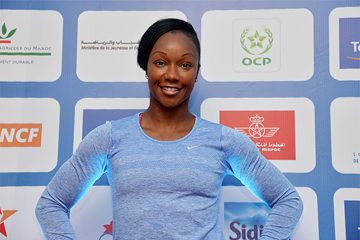
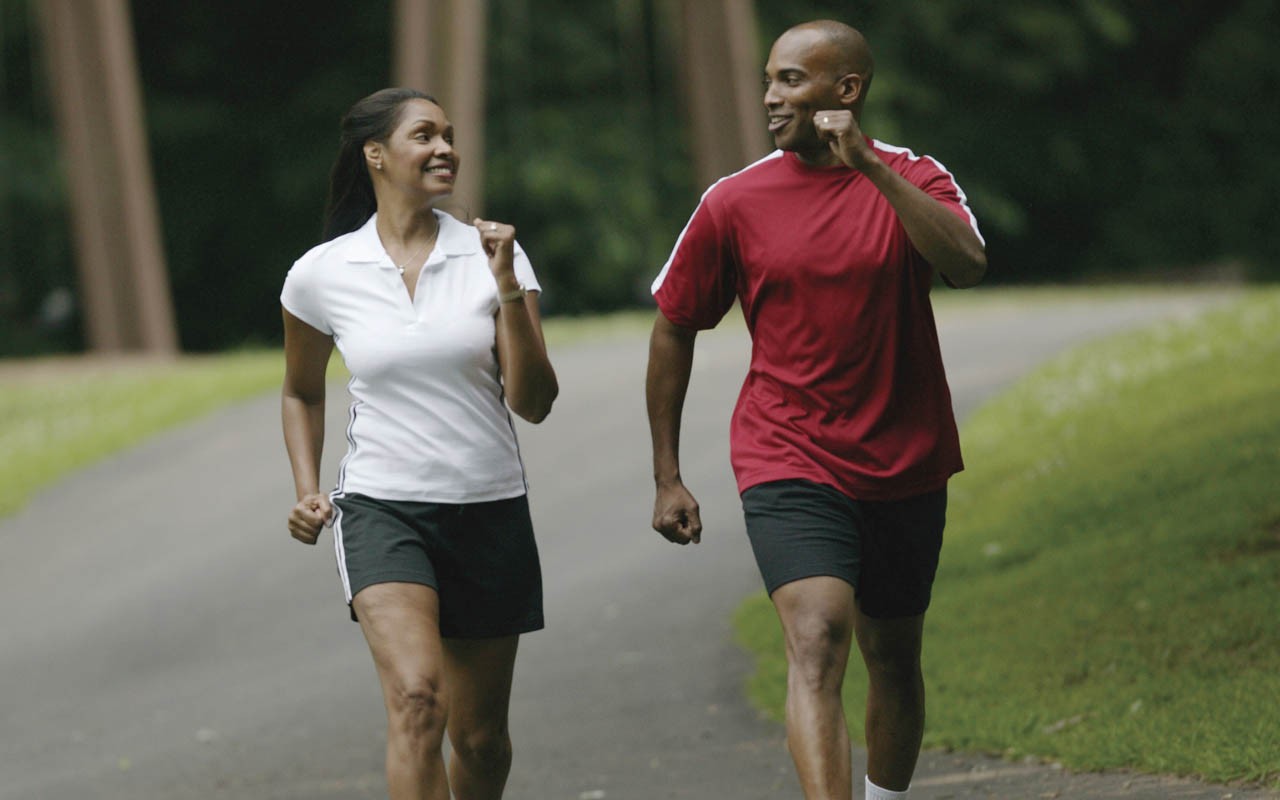
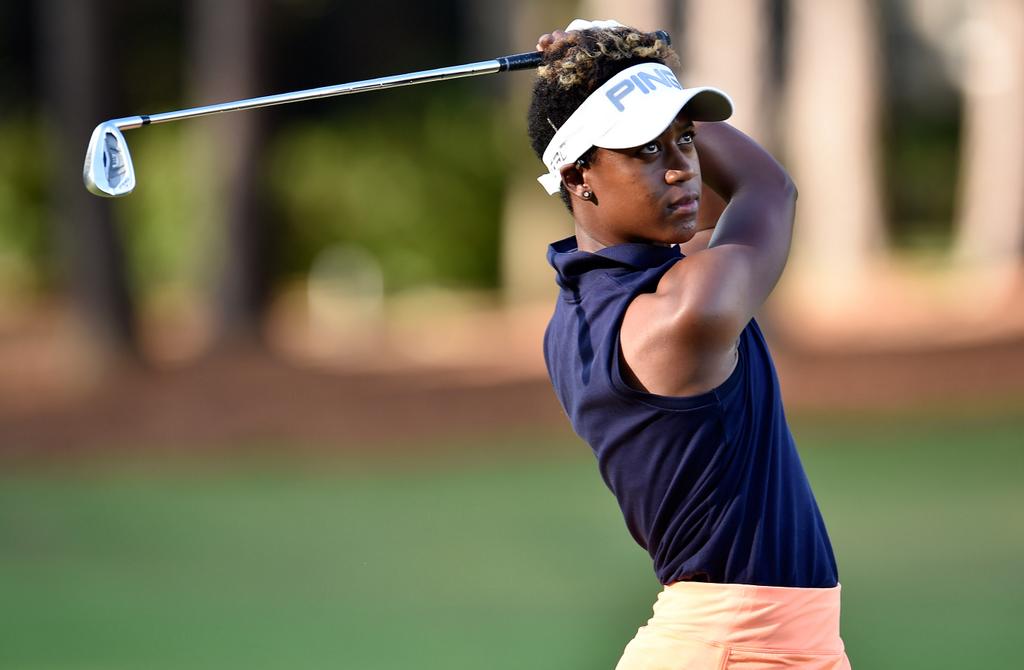
Exercise
Exercise is one action done by humanity that caused immediate health benefits. It is very popular worldwide. It is found in people running. It’s found in various videos of fitness experts inspiring their clients to perform in an exceptional fashion. Exercise deals with human lives literally and it is the quintessential activity that can definitely extend life expectancy. I have done exercising for many years. It has blessed me in enumerable ways. A rush of energy is experienced by me as a product of working out. Physical exercise can work the mind the rest of the human body. Some people exercise to improve their cardiovascular health. Some want wealth loss. Some want to slow down aging. Others want to hone their athletic skills. Some want to boost their immune systems. Regular physical exercises not only boost the immune system. The reason is that exercises increase the levels of immunoglobulins. These are proteins that help bolster a person’s immune system and ward off infection. "Every sweat session you do can help strengthen your immune function for about 24 hours," says Cedric Bryant, PhD, chief science officer for the American Council on Exercise. It can prevent diseases like cardiovascular disease, type 2 diabetes, and obesity. It can prevent stress and depression. Mood enhancing chemicals like serotonin, dopamine, and norepinephrine flood the brains after exercise and can last for a day. The more a person can exercise, the greater the sensitivity to insulin. So, it can lower the blood sugar levels and reduce the risk of type 2 diabetes. Your VO2 max, a measure of your endurance and aerobic fitness, has already increased by about 5 percent, according to Olson. As early as 65 B.C., Marcus Cicero accurately stated that, “It is exercise alone that supports the spirits, and keeps the mind in vigor.” Therefore, is someone wants to live longer, have more energy, and just feel good, then exercise is a great way to accomplish those specific goals.
Exercise can prevent excess weight gain or help to maintain weight loss. Every time when someone exercise, a person burn calories. The more intense the activity, the more calories a person burn. Regular exercise can boot high density lipoprotein (HDL) or good cholesterol and decrease unhealthy triglycerides. This causes the blood to flow smoothly, which decreases the risk of cardiovascular diseases. It can prevent or manage many health concerns like stroke, metabolic syndrome, type 2 diabetes, depression, many cancers, arthritis, and falls. Exercise can improve the human mood. Exercise stimulates brain chemicals that cause people to be more happy and relaxed. “For years we focused almost exclusively on the physical benefits of exercise and really have ignored the psychological and emotional benefits of being regularly active,” says Cedric Bryant, chief science officer of the American Council on Exercise. Exercise advanced better sleep. Many researchers want people to aim for at least 150 hours per week of moderate intensity exercise or 75 minutes per week of vigorous exercise. Aerobic exercises include running, walking, and swimming. Strength training is great too. Exercise is a natural form of medicine. "There is no pill that comes close to what exercise can do," says Claude Bouchard, director of the human genomics laboratory at Pennington Biomedical Research Center in Louisiana. "And if there was one, it would be extremely expensive."
There is a study published in the journal Science Advances. People involved in the study are Anabelle Decottignies, from the de Duve Institute at the Catholic University of Louvain in Brussels, and her colleagues found that just moderate-intensity physical activity helps hold back cell aging. They studied the part of DNA that tells how many times a cell had divided. Every time a cell divides, it copies its DNA (which is packed into chromosomes) and this section of the chromosomes called telomeres gets shorter. Decottignies identified a molecule that’s responsible for directing this telomere shortening. She used 10 healthy people to ride a stationary bicycle for 45 minutes and took a muscle biopsy from each of their legs before and after the cycling session. She measured the blood levels of muscle function with lactate which muscle cells produce when stressed. She found that exercise increases levels of NRF1, which protects the telomeres from being snipped away. The more exercise, the more the telomeres are refreshed, which helps DNA. This causes cells to remain younger and hold off the aging process.
Exercise can make the skin look better too. Aerobic exercise sends more blood to the skin. It delivers oxygen and nutrients to improve skin health and even help wounds heal faster. “That’s why when people have injuries, they should get moving as quickly as possible—not only to make sure the muscle doesn't atrophy, but to make sure there's good blood flow to the skin,” says Anthony Hackney, an exercise physiologist at the University of North Carolina at Chapel Hill. Doing exercise long enough can add more blood vessels and tiny capillaries to the skin. Exercise causes the human body to burn fat cells more effectively (the body uses both carbohydrates and fats as energy sources). Regular physical exercise can reduce blood pressure and improve human cholesterol levels. Doing muscle strengthening exercises can strengthen the bones and muscles. As little as 30 minutes of cardio three to five days a week will add six years to your life, according to research at the Cooper Clinic in Dallas.



Ernestine Shepherd
For years, Ernestine Shepherd has inspired many people to do exercise excellently. She has blessed countless human beings on the principles of love, compassion, and determination, so people can achieve their goals. She also is a mother, a grandmother, and a human being who loves honor. She was born in June 16, 1936. He lived in Baltimore for years. She was a model for years. She said that in her youth, she wasn’t interested in athletics or exercise of any kind. Later, at the age of 56 years old, she and her sister Mildred Blackwell started to take aerobics classes. Aerobics classes revolve around exercises that deal with stretching and strength training (that wants to improve flexibility, muscular strength, and cardio-vascular fitness). An instructor goes along to instruct people on how to perform and music is abundant during the course of the workouts. They involve warm ups, cardio vascular conditioning, muscular conditioning, strength and conditioning, cool-down, and stretching and flexibility. Both the term and the specific exercise method were developed by Dr. Kenneth H. Cooper, an exercise physiologist, and Col. Pauline Potts, a physical therapist, both of the United States Air Force. In 1968, he published Aerobics, which included exercise programs using running, walking, swimming and bicycling. The book came at a time when increasing weakness and inactivity in the general population was causing a perceived need for increased exercise. Later, Ernestine’s sister started to compete in bodybuilding shows under the name of Velvet.
Ernestine followed under the name as Ernie. Later, Mildred Blackwell died in 1992 after a brain aneurysm. This was a sad time in Ernestine Shepherd’s life. Later, she continues into fitness and bodybuilding. Her husband Colin supports her 100 percent. They have been married for over 50 years. Colin prepares meals. She does these things, as she admitted, in memory of her later sister. Since the age of 56, she has won two bodybuilding titles including running nine marathons. At one point, she was the oldest competitive female bodybuilder in the world. She was declared by the Guinness Book of World Records in 2016 and 2017. She has no serious aches or pains. She takes no medications has a 9 to 10 % body fat. She leads in exercise classes for seniors at the Union Memorial Methodist Church in Baltimore. She also works as a personal trainer. Her diet consists of 1,700 calories a day, mostly from boiled egg whites, chicken, vegetables and a liquid egg white drink, and she runs about 80 miles a week; she affirms that she does not take supplements. She has published a book, entitled, “Determined, Dedicated, Disciplined to be Fit” in 2016. She has spread her happiness to individuals internationally.
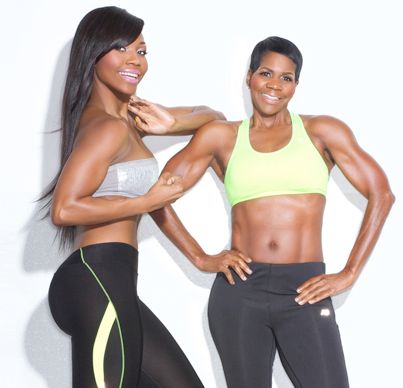
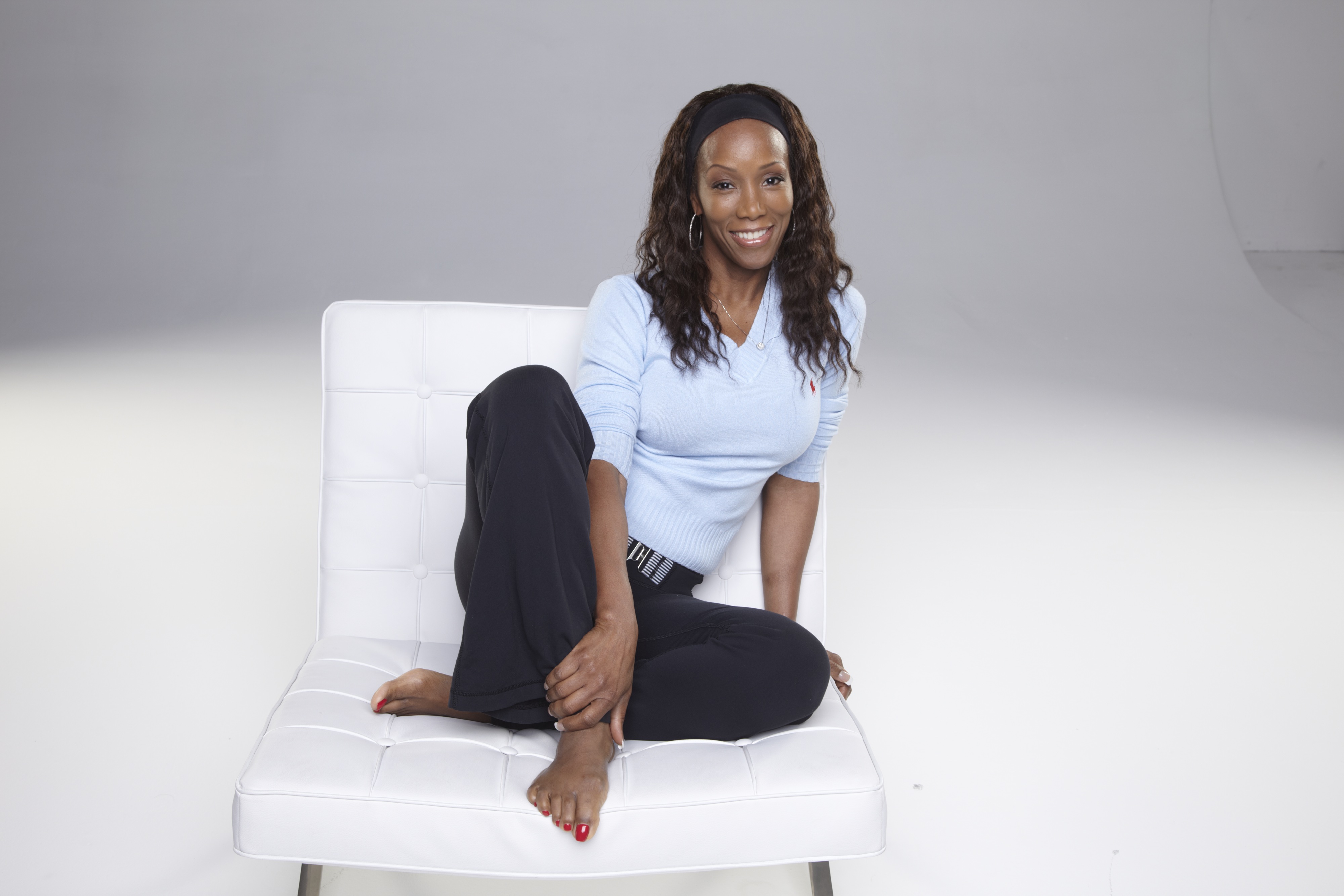
Other Fitness Heroes
There are tons of fitness heroes in the world who believe in excellent fitness and helping others. Two people, who are a mother and a daughter, are showing a great message to people. Their names are Allen and Lana Ector. They are based in Atlanta and they promote the exercise program called, “Black Girls Workout Too.” This program inspires women to workout, so their heart rate can increase while their bodies are toned. They are promotion a revolution where people can feel good, work out, and maintain a great, positive attitude. They promote cardio, boing workouts, and other actions to improve the human body. Ellen Ector is the mother of Lana Ector. They wanted to promote more African American women to be involved more in fitness, which is great.
Wendy Ida is another trailblazer involved in fitness and working out. She is a 65 years old grandmother that is certainly performing in a great level. She lives in California. Her daughter is Sky, who is 41 years old. Wendy Ida looks very young. Wendy does a great fitness routine and we respect her contributions in exercise prodigiously. She constantly uses words and deeds to motivate tons of people to achieve their next level goals. She started to go into the gym at the age of 43 years old. Wendy Ida is a domestic abuse survivor who wants her story to inspire others to fight against injustice and stand for their human dignity. Now, she is a top fitness trainer and life coach in Los Angeles, California. She has said that people mistake her and Sky as sisters. Wendy Ida is a personal trainer and a nutrition specialist. She has written the book entitled, “Take Back Your Life.” She has a joyful, down to Earth personality. She loves to workout as well. “I thought after age 40, it’s over and you just accept what’s coming to you,” shared Wendy. “I thought after that age, you can’t really change–Boy, was I wrong!” Wendy is also an 8 time award winning National Champion of top trophy awards in the NPC Body Building and Figure Championships as well as a Strive to Thrive Fitness Expert touring with Actors Boris Kodjoe and Nicole Ari Parker. She is known to be on TV and talk radio. She has been on commercials, exercise videos, and magazines as well. “It’s psychologically enriching. It’s about feeling your soul. It’s not just physical, it’s about taking your like back,” Wendy says. She has achieved many awards and she is making a difference in the lives of so many human beings.


Adrienne Galloway is a great, nationally recognized trainer, educator, and fitness expert. She has worked for years to assist and help human beings. She has worked in the physical fitness world for over 25 years and she is 53 years old today. She does celebrity training, military physical training, touring, group training, and 1 on 1 session. She has partnered with another fitness legend, who is Sister Donna Richardson. She has trained Kurt Thomas (who is retired from the NBA) and Sylenena Johnson (who is a legendary R&B singer who was born in Harvey, Illinois. She has ties to Chicago). She is right to say that wellness is fitness is important along with emotional and spiritual strength too. A positive mindset goes a long way in living a longer life. She loves to eat seared scallops, shrimp, kale, and other healthy foods. She works with Heart and Soul Magazine to promote healthy living. She runs AG FitClub.
She changed the game in many ways. She has inspired a generation of women to pursue fitness. She is Lenda Murray. I knew by intuition that I will mention information about her since she is a great trailblazer. We honor her philanthropy and her contributions not only in exercise, but in life in general. She has proclaimed the truth that femininity is diverse and that muscles and femininity go hand in hand. She has provided many programs to help people in general to pursue fitness. She has a love of helping others, and a keen awareness of the importance of altruism. So, I believe in keeping the faith and real strength comes not by selfishness, but by being humble, cultivating wisdom, and never surrendering to evil. Doing good is not only right, but it feels good to do good too. She is always giving lectures and congratulating others. Bless Sister Lenda Murray.



Also, I believe in body positivity. Also, you can be healthy in a diversity of shapes and sizes too. So, I always send love to plus sized Sisters too (as they are beautiful and they are worthy of the respect of their minds, wisdom, and human character). We all love you. :)
Jessamyn Stanley promotes body positivity, stretching, and other workouts constantly. Mocha Lee is a great exercise advocate too. She was born in 1971 in Charlottesville, Virginia. She has worked for years in her fitness expertise to promote total body workouts. She has worked in the D.C. and Maryland area. She lives in Washington, D.C. She is a devoted mother and wife.
Tiffany Rothe is a mother and a famous fitness expert too. She is a fitness coach who works for the people in enriching their health and their bodies. She loves to help people and many human beings have been changed positively by her efforts. She is blessed and I honor her contributions

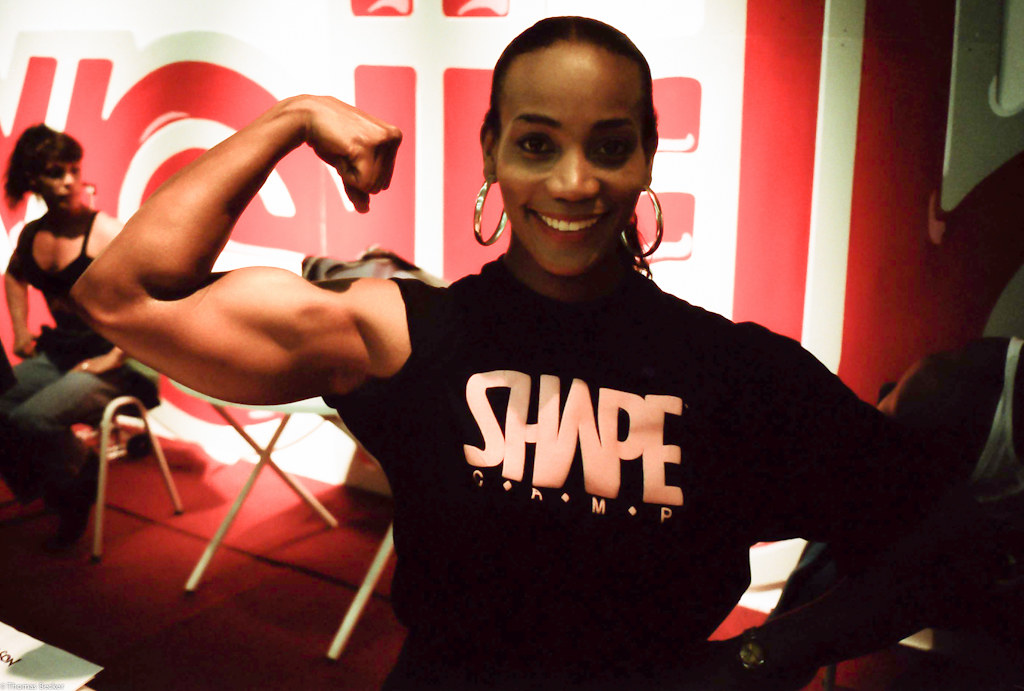

Jeanette Jenkins is a great fitness advocate in our generation. She is the founder and President of the Hollywood Trainer LLC. She has worked hard for years to promote fitness and healthy eating in the African American community and for everyone else. She was born in Canada. She studied human kinetics at the University of Ottawa, which is in Canada. Jeanette Jenkins is an inspirational woman. Jeanette Jenkins has over 18 earned international certifications dealing with fitness, nutrition, etc. She was the first woman winner of Fear Factor where she won $50,000. She was one of the 17 experts chosen for Nike Corp.’s Elite Athletes Program. She has been the official spokesperson for the BET Foundation’s A Healthy BET Campaign. I saw a commercial with her on BET promoting heart health in the black community many years ago. Recently, she has been famous for working with Kelly Rowland to promote their fitness workout DVD. She has worked with many celebrities in fitness for years. She loves to do working out, kickboxing, stretching, and just living life. She has an excellent positive energy. She also participates in tons of charitable organizations from School on Wheels, the Boys and Girls Clubs of America, Keep a Child Alive, Women’s Sports Foundation, etc. She has promoted health care, medicine, and support to children and families affected by HIV. Jeanette Jenkins wants working out and healthy living to be a lifetime affair. She is a blessed person and I wish more blessings to come to Jeanette Jenkins.


A Final Message
Learning about helath and exercise for long years has blessed me in many ways. I am definitely more aware about the importance of health care and exercise now more than ever. I realize that body positivity is important not just fitness. I never been to take a physical before in long time, so I did one recently during the summer of 2017. I came into the medical center. I turned in my medical card and ID and they gave it back to me. For days, I finished the application. It was my first time taking a physical, so the physician asked me many personal questions. Later, the physician took the exam. She was a young woman. She said that I did well and another nurse cleaned out my ears. My blood pressure is 124/71. I weigh 217 pounds. I'm 33 years old. I'm over 6 ft. tall. They gave me a tetanus shot since I haven't taken that shot since childhood. They wanted me to take such a shot every 10 years. Also, I did blood work or they took some of my blood to test for many things. I was finished afterwards. Before I did the exam, I exercised and didn't eat anything except drink water 8 hours prior to the exam. I do recommend anyone to have a physical exam. I know a lot of men have egos and refuse to see a doctor frequently, but people have to get over their egos and do the right thing. I'm glad and happy that I did what I had to do for my health.
One of the most healthy foods around is oatmeal. Everytime I eat oatmeal I feel more healthy and it immediately reduces stress. It has soluble fiber and it has been documented to reduce LDL levels (or bad cholesterol). It has calcium and it helped many people globally. It can protect the skin too. Oatmeal can reduce the risk of colon cancer. Oatmeal has been good to me. We know of the great health benefits of exercise as well. It can help to prevent diabetes and it boosts overall heart health. Therefore, I love oatmeal a great deal. I want to mention this point. This is an important issue. I was inspired to write about it, because of one spiritual woman and a great Friend. She knows who she is. :) It is important to recognize the truth that Strength is Beautiful. That means that there is nothing wrong with a woman with muscles. In this generation, we have more people who show tolerance and respect for women who are into fitness and exercising. Back in the day, there was a lot of intolerance about that (even against great pioneers like Lenda Murray & Serena Williams). Even today, many misogynists and wrong headed people believe in the lie that a woman shouldn't have muscles in a great way. We will let the truth be known that men and women have every human right to exercise, to be free, and to express themselves in a progressive society. Therefore, we are living now and we have this opportunity to inspire people (both men and women) to live out their destinies. We want people to succeed. Some are gifted in fitness, art, teaching, athletics, education, construction, architecture, theology, and other fields. That's fine and we believe not only in respect and human dignity. We believe in living that credo forever. So, the words from the haters don't mean a hill of beans. Truth conquers all and Everyone should follow their dreams.

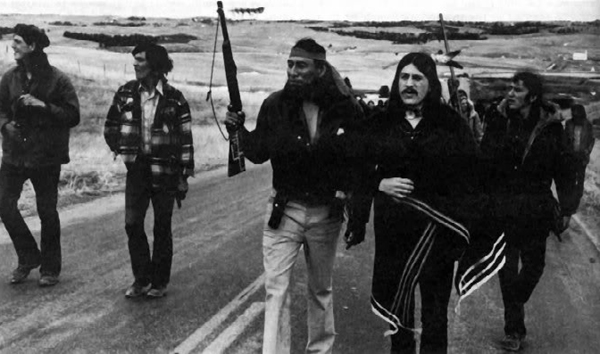

The American West (1900-Present)
The American West have existed for a long time. From the events of migration to the Bearing Strait to our modern age, the West has captivates our curiosity and our imagination. This is the last chapter of the American West series. Centuries of war, land battles, and civilizations existed. Its cultural diversity and its history have sparked debates and discussions for generations. Native Americans were the first human beings who traveled into the Americas during the end of the Ice Age. They experienced a horrendous genocide at the hands of imperialists who were anti-morality to the fullest. Also, movies have shown the West. Some films have shown false views of the West filled with racist stereotypes and a simplistic analysis of historical events. Other Western films have accurately shown the complex disposition of the history of the frontier West. Now, it is the time to present these issues. Also, it is great and honorable to acknowledge the Native American activist movement of the 20th century too. In our generation, Native Americans are till fighting for their rightful human liberation.
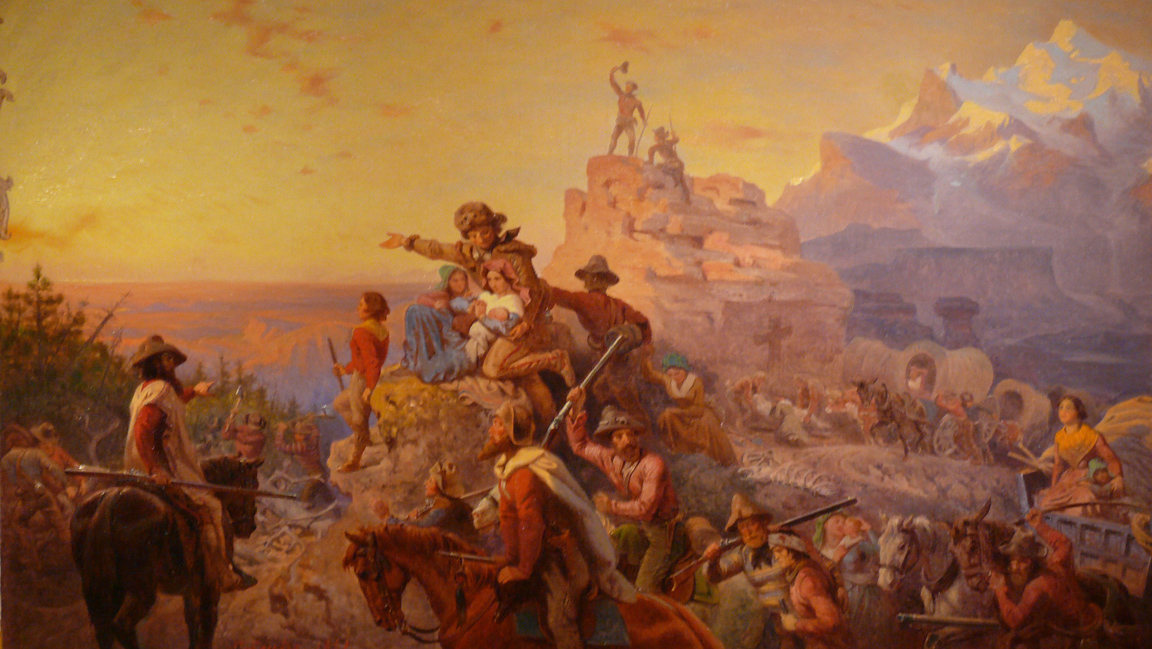
The Myths of the West
The myth of the West is pernicious and influential today. The myth of the West involves the romanticization of the frontier West. It involves many things. It involve the myths that cowboys and gold miners had a quaint experience, that the frontier was filled with little violence, that most of the Western heroes were white males, that cowboys were totally independent without any assistance, that tons of people of the West were filled with happiness plus joy, and the racist myth that the Native Americans were the enemies of frontiers people. Another myth was that the land of the frontier was unlimited and that anyone could just go over there and conquer it without restraint. The mythical image of the American West has been promoted not only by movies. It has been shown by books, magazines, and other forms of media from the 19th century to this very day during the early 21st century. Many people criticized Frederick Jackson Turner’s interpretation of the American West. Turner published the “The Significance of the Frontier in American History" in 1893. The literature was promoted before the American Historical Association in Chicago during the World’s Columbian Exhibition (Chicago World's Fair). His Frontier thesis was that expansion into the West caused more American democracy, a lack of interest in high culture, and violence. These characteristics in his mind was unique and American. Scholars of the New Western History, including Limerick and Richard White argue that Turner ignored gender, race and class in his work, focusing wholly on facets of American exceptionalism. The one-dimensional aspects of his work can be seen in the stereotypically male frontier myth that endures. The major myth of the West is that the West mostly was a great time of exploration and drama was kept to a minimum.
The truth about the frontier West is the opposite. Often, the West was very violent. There was racism against Mexican-Americans and African Americans. There was the massive exploitation of natural resources which cause boom and bust towns. Many Native Americans experienced discrimination, murder, and terror. Many settlers were massacred by many factions. People fought against each other massively. Also, many people in the West were progressive, opposed bigotry, and fought for justice too. So, the frontier West was complex. I am more in line with the New Western History ethos. You have to take into account of race, class, gender, the environment, and other aspects of history in order to gauge a clear, excellent picture of frontier Western existence. Scholars of the New Western History movement criticized Turner’s Frontier Thesis. These new scholars (from the 1970’s and beyond) include Patricia Nelson Limerick, Michael Allen, Richard Slotkin and Richard White. They have disputed the value of Turner's thesis. They also focused on an examination of the problems of expansion; destruction of the environment, indigenous massacres, and the realities of settler lives. In essence, people want truth not myths. Journalist Samuel Lubell saw similarities between the frontier's Americanization of immigrants that Turner described and the social climbing by later immigrants in large cities as they moved to wealthier neighborhoods. He compared the effects of the railroad opening up Western lands to urban transportation systems and the automobile, and Western settlers' "land hunger" to poor city residents seeking social status. Just as the Republican party benefited from support from "old" immigrant groups that settled on frontier farms, "new" urban immigrants formed an important part of the Democratic New Deal coalition that began with Franklin Delano Roosevelt's victory in the 1932 presidential election. The real West must be shown, so this generation and future generations can understand the diverse, complex historical legacy of the frontier West.



Certain Movies about the West
The American frontier West has been influenced by popular culture for a long time. Art, music, novels, dance, magazines, stories, movies, television, etc. show information about the West. There are many composers that showed their voices on this issue from Aaron Copland to Arthur Farwell. The concept of the wilderness to some related to environmental issues. The mythologizing of the West has been shown by minstrel shows and music since the 1940’s. P.T. Barnum shown Native American chiefs, dances, and other exhibits in his museums. Many novels exaggerated what was really going on in the West like the 1859 book of Malaeska, the Indian Wife of the White Hunter.” It simplified reality and exaggerated the truth. The novel gathered the attention of many people. It showed the stereotypical images of heroes and villains. It showed cowboys as courageous while Native Americans were portrayed as “savage.” It showed the lawmen as heroes and the cattlemen as predators. The most successful of all dime novels was Edward S. Ellis' Seth Jones (1860). Ned Buntline's stories glamorized Buffalo Bill Cody and Edward L. Wheeler created "Deadwood Dick", "Hurricane Nell", and "Calamity Jane.” Buffalo Bill Cody popularized the Old West in the U.S. and in Europe. By the 20th century, many tourists can into the West to research the land and its history. One of the most famous filmmakers of the 20th century who showed his depictions of the West was John Ford. John Ford loved scenery. Many early movies talked about the transcontinental railroad, cowboys, Native Americans, etc. Movies especially romanticized the cowboy. The cowboy is an American archetype. Many American revere the cowboy from President Theodore Roosevelt to others. Roosevelt conceptualized the herder (cowboy) as a stage of civilization distinct from the sedentary farmer—a theme well expressed in the 1944 Hollywood hit Oklahoma! that highlights the enduring conflict between cowboys and farmers. Roosevelt argued that the manhood typified by the cowboy—and outdoor activity and sports generally—was essential if American men were to avoid the softness and rot produced by an easy life in the city. The reality is that manhood is diverse and sensitivity is not antithetical to true manhood or womanhood.
Will Rogers was famous for his depictions of the West. He was the son of a Cherokee judge in Oklahoma. Many fictional stories came about to describe life about cowboys, Native Americans, etc. There were cowboy autobiographical stories too. Western films were existence by the early 1900’s too. John Ford directed the film called Stagecoach in 1939. It was the movie that showed John Wayne in a breakthrough role. John Wayne is famous for being in Western films. He was once more liberal and became one of the most conservative movie actors in history. He not only supported the Vietnam War and voted for Nixon instead of JFK in 1960. He also supported white supremacy in a 1971 interview. He was notorious for his racism and far right politics. The film Stagecoach was about a group of settlers and them going into Apache territory. Stagecoach was the first of many Westerns that Ford shot using Monument Valley, in the American Southwest on the Arizona–Utah border, as a location. Stagecoach was a very popular film. It is not a secret that many Western films used negative stereotypes against Native Americans. Many films back then showed Native Americans in a more negative light while white settlers were portrayed as virtuous. Back then, it was so bad that many white actors acted as Native Americans with feathers and makeup. The 1913 film of The Battle of Elderbusch Gulch portrayed Native Americans as criminals trying to raid a white establishment. The director was D. W. Griffith who directed the notoriously racist film Birth of a Nation. Nicolas Rosenthal wrote a book entitled, “Reimagning Indian County.” He wrote that many high paying roles of Native American chiefs came to non-Native American actors while many Native Americans were used in the background. Those Native Americans were paid a lower rate.
Many Native Americans who were actors fought for fair wages in the War Paint Club and the Indian Actor’s Association with people like Luther Standing Bear, William Eagleshirt, and Richard Thunderbird. The Native American Movement for justice in the 1960’s and the 1970’s caused people to fight against racist stereotypes in film. The 1962 film Geronimo has Geronimo fighting for his family and tribe while 1939’s Stagecoach has Geronimo being blood thirsty. After the 1970’s, more diverse depictions of Native Americans existed. There was Dances with Wolves in 1990 and the Last of the Mohicans in 1992. Native Americans also directed, produced, and acted in their own films and productions. The Falling Arrow was directed in 1909 by the Native American James Young Deer (of the Nanticoke tribe). In 1966, several Navajos near Pine Springs, Arizona, participated in an anthropological study that produced several short films known collectively as Navajos Film Themselves. Victor Masayesva, Jr. directed Weaving in 1981. Native Americans like Jeff Barnaby and others directed their own films. Native American films continue to exist. Many Westerns, even today, have shown stereotypes. Yet, more people are learning the truth and taking their time to promote fair, accurate depictions of Western life and of Native American human beings.


Native American Activism
There is a long history of the Native American civil rights movement. On November 29, 1924, the federal government officially classified Native Americans as citizens. They were given the right to vote in national elections. This was done after Native Americans fought in at least three wars before that time in America. The Indian Reorganization Act of 1934 tried to help Native Americans to strop the loss of their lands and give them funds for economic development. They wanted to reestablish tribal governments. The problem was that racial oppression against them continued. ON April 26, 1944, 100 Native American met together. They established the National Congress of American Indians (NCAI). It was established in Denver, Colorado. This group was created in order for people to monitor federal policies. Over 250 member tribes worked to secure their human rights and benefits that they are entitled too. They wanted to enlighten the public to gain a better understanding of Native American people. They wanted to preserve rights under treaties or agreements with the United States. They wanted to promote the common welfare and Alaska Native American rights too. Many Native American schools grew by the 1940’s and they serve their communities. The Indian Claims Commission Act (of 1946) was a bill that allowed Natives to sue the government over land disputes. $800 million in compensation was given out, but no land was returned. This act foreshadowed future government policies. In the 50's and 60's, Congress passed additional laws that terminated hundreds of Native American Tribes, cutting them off from their tribal government and subjugating them to federal law. In 1953-1954, the House Concurrent Resolution gave California, Oregon, Minnesota, Wisconsin, and Nebraska civil and criminal jurisdiction over most Native American lands within their borders. The William v. Lee case was important in 1960. The case involved a non- native person, who owned a general store on native land. The store owner wanted to collect for good that were sold to a native couple on credit. The court ruled that jurisdiction fell to native courts and not state courts. On September 12, 1961, the National Indian Youth Council (NIYC) was formed. Youth activism continued to rise nationwide. The NIYC was created to resurrect a sense of pride among young Native Americans and to advance an activist message of freedom. The January 1, 1966 National Historic Preservation Act was a supplement to the Antiquities Act of 1906. This act prohibits excavation of Federal or Native land. One of the most important events of Native American history was the creation of AIM in July of 1968 (in Minneapolis, Minnesota). This was the birth of the American Indian Movement. AIM was embraced by many urban Native Americans who believed that direct and militant confrontation with the U.S. government was the only way to redress historical grievances and to gain civil rights in the contemporary era. This group believed that the tribal governments organized under the IRA in 1944 were not truly legitimate or grounded in traditional Native American ways.
AIM was initially formed to address American Indian sovereignty, treaty issues, spirituality, and leadership, while simultaneously addressing incidents of police harassment and racism against Native Americans forced to move away from reservations and tribal culture by the 1950s-era enforcement of the U.S. federal government-enforced Indian Termination Policies originally created in the 1930s. "As independent citizens and taxpayers, without good education or experience, most 'terminated' Indians were reduced within a few years to widespread illness and utter poverty, whether or not they were relocated to cities," from the reservations. The original founders of AIM included Dennis Banks, George Mitchell, George Mellessey, Herb Powless, Clyde Bellecourt, Vernon Bellecourt, Harold Goodsky, Eddie Benton-Banai, and a number of others in the Minneapolis Native American community. Russell Means, born Oglala Lakota, was an early leader in 1970’s protests.
AIM participated in the Rainbow Coalition organized by the civil rights activist and urban leader Fred Hampton, who was elected as Deputy Chairman of the Illinois Chapter of the Black Panthers shortly before his assassination at the hands of Chicago police in Chicago on December 4, 1969. It included the Young Lords under its founder Jose Cha Cha Jimenez from Chicago's Lincoln Park Neighborhood. Charles Deegan, Sr. was involved with the AIM Patrol.
Like an urban American Indian version of the Black Panthers formed by African American social activists, AIM initially addressed civil rights violations, but later broadened its scope to address human rights violations. Reverend Dr. Martin Luther King, Jr., who also spoke eloquently on human rights issues, reached out to the Indian movement during the planning stage of his Poverty Campaign a few weeks before his assassination in Memphis, Tennessee, on April 4, 1968. Likewise, Robert F. Kennedy had met with Black Panther representatives in California and met with Indian movement representatives and visited reservations in Montana, New York, and elsewhere before his televised assassination on June 6, 1968 in Los Angeles during his presidential campaign. RFK's son David A. Kennedy was given the tribal-inspired honorary name Yellow Dove after his father's death and before his own.
Malcolm X often referred to the human rights struggles of Native Americans in his speeches and in his autobiography, and was actively attempting to introduce a condemnation motion at the United Nations shortly before his assassination. The AIM were involved in the 1973 Wounded Knee incident in order to make known of the importance of Native American human rights. Though periodic negotiations were held between AIM spokesman and U.S. government negotiators, gunfire occurred on both sides. A US Marshal, Lloyd Grimm, was wounded severely and paralyzed. In April, a Cherokee from North Carolina and a Lakota AIM member were shot and killed. The elders ended the occupation then. The Pine Ridge Reservation shootout happened in June of 1975. Many Native Americans were acquitted because of self-defense. One was convicted. His name is Leonard Peltier. The AIM had ideological diversity too. Some AIM members believe in more spiritual, more autonomous powerbase and other AIM members believed in a more centralized, controlled political philosophy.
Many Native Americans worked in political causes, fought injustice, and inspired the youth. The June 27, 1972 Indian Education Act was historic. It authorized funding for special bilingual and bicultural programs. It caused culturally relevant teaching materials and appropriate training and hiring of counselors. The law wanted to meet unique, educational, and culturally related academic needs of Native Americans in America including Alaska, so that these students can achieve the same challenging state standards as all students should have. The book called, “The South Carolina’s Black and Native Americans 1776-1976, Bicentennial Project” explored issues around African Americans and Native Americans. This book and its findings were produced by the State Human Affairs Commission which was chaired by Dr. Marianna W. Davis. The Longest Walk took place on April 26, 1978. It was a large, important national protest event. It started in San Francisco where a group of Native Americans set to go to Washington, D.C. They wanted to symbolize the forced removal of Native Americans from their ancestral homes. They also wanted to draw attention to the growing governmental and public backlash against efforts to protect Native American treaty rights and Native Peoples. In 1988, the US Forest Service wanted to build a fire service road on Native American religious ritual grounds in Chimney Rock and Six Rivers National Forests. The Court ruled in favor of the Native Americans. Alfred Smith and Galen Black were fired for ingested peyote for ceremonial purposes. Both were denied unemployment benefits because they were fired for "misconduct". The court ruled in favor of Smith and Black because their denial benefits violated the free exercise rights under the First Amendment. The decision found in April 17, 1990 was called the Employment Division of Oregon v. Smith.
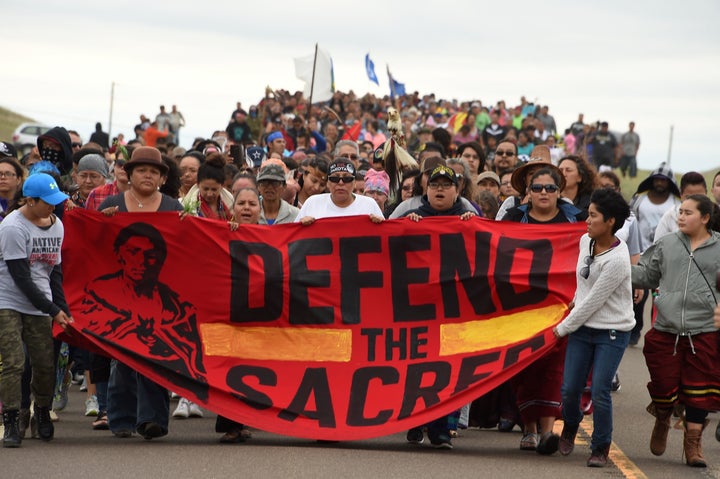
The Native American Graves Protection and Repatriation Act of 1990 required museums and government agencies to disclose all artifacts from Native American including human remains, funerary objects, sacred objects, and objects of cultural patrimony, cultural items and return them to tribes if they could prove it belonged to them. The Native American Languages Act of 1990 states Native Americans are entitled to using their own language and places importance on Native Americans preserving their language. This act reverses the previous policy of eradicating native languages. On September 13, 2007 the United Nations General Assembly adopted the "Declaration on the Rights of Indigenous Peoples." A total of 144 states or countries voted in favor. Four voted against it while 11 abstained. The four voting against it were the United States, Canada, Australia, and New Zealand, whose representatives said they believed the declaration "goes too far."
The Declaration announces rights of Indigenous Peoples, such as rights to self-determination, traditional lands and territories, traditional languages and customs, natural resources and sacred sites. One of the greatest fighters for Native American human rights was Russell Means. He was born in South Dakota and fought for human rights throughout his life. He passed away in 2012.
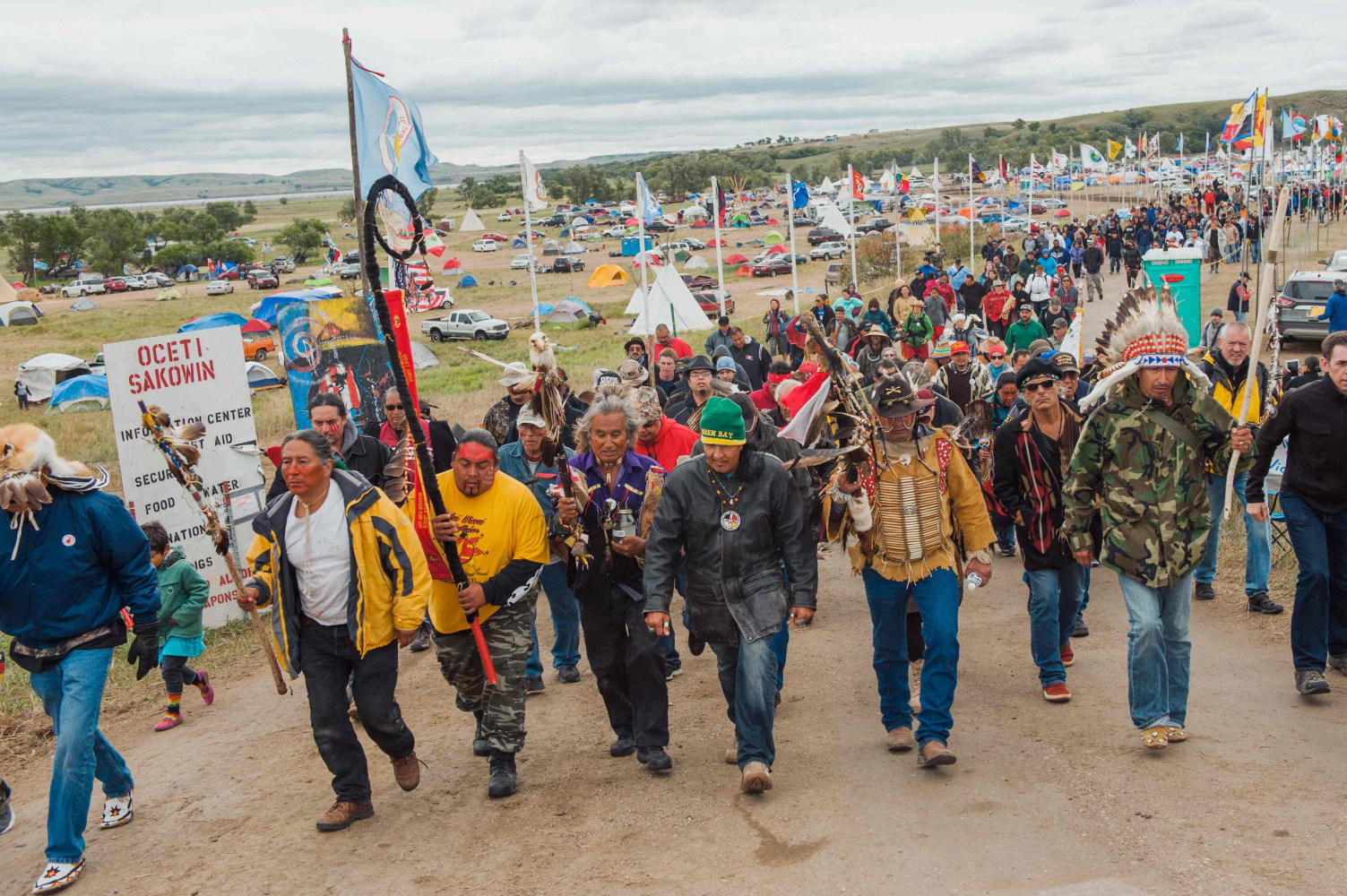

Our Modern Generation
Native Americans continue to fight for their own freedom and human liberation. The recent events of Standing Rock represent the same fight for environmental justice and land sovereignty. The situation started when a corporate entity wanted to build the Dakota Pipeline on sovereign land. Native Americans and their allies disagreed with this action. That is why on April 2016, tribal members started to protest the 1,172 mile proposed Dakota Access Pipeline (which will cross farms, tribal areas, other natural areas, wildlife habitat, and other communities). The proposed pipeline stretches from North Dakota, South Dakota, Iowa, and Illinois (at an oil tank farm near Patoka, Illinois). The Native Americans formed camps along the banks of Lake Oahe in North Dakota. On August 2016, members of the Sioux tribe filed suit in federal district court in Washington, D.C. This suit was against the Army Corps of Engineers, which was the primary federal agency that granted permits used for the construction of the pipeline. The NoDAPL movement grew and many people from a diversity of walks of life expressed support and solidarity with the Native American human beings who desired the pipeline to not be constructed. Protests continued. By September of 2016, private security teams attacked Native American protesters with dogs and mace. At least 30 people were pepper-sprayed and six people including a child was bitten by dogs according to tribe spokesman Bear. As time transpired, many people were arrested and the corporate authorities continued to disregard the rights of the Native Americans who live in that area. By July of 2017, a federal judge ruled that the federal permits authorizing the pipeline to cross the Missouri River just upstream of the Standing Rock reservation, which were hastily issued by the Trump administration just days after the inauguration, violated the law in certain critical respects.
In a 91-page decision, Judge James Boasberg wrote,
“the Court agrees that [the Corps] did not adequately consider the impacts of an oil spill on fishing rights, hunting rights, or environmental justice, or the degree to which the pipeline’s effects are likely to be highly controversial.”
The court didn’t decide on whether pipeline operations should be shut off and has requested additional briefing on the subject and a status conference. The pipeline so far is operational unfortunately. Yet, Native Americans continue to fight back and are active in many social movements for change to this very day.
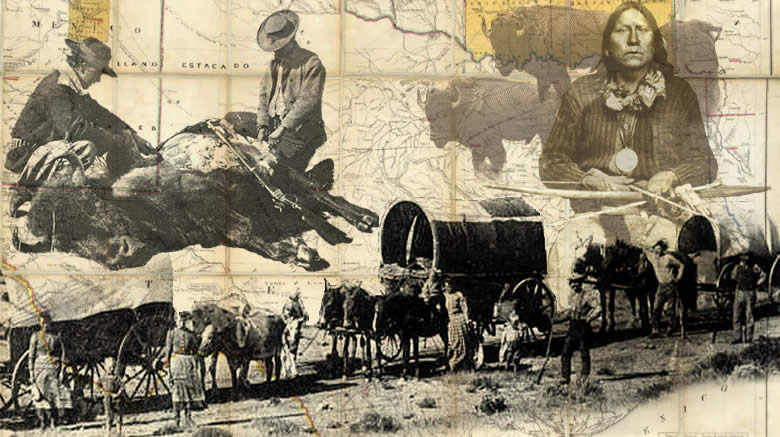
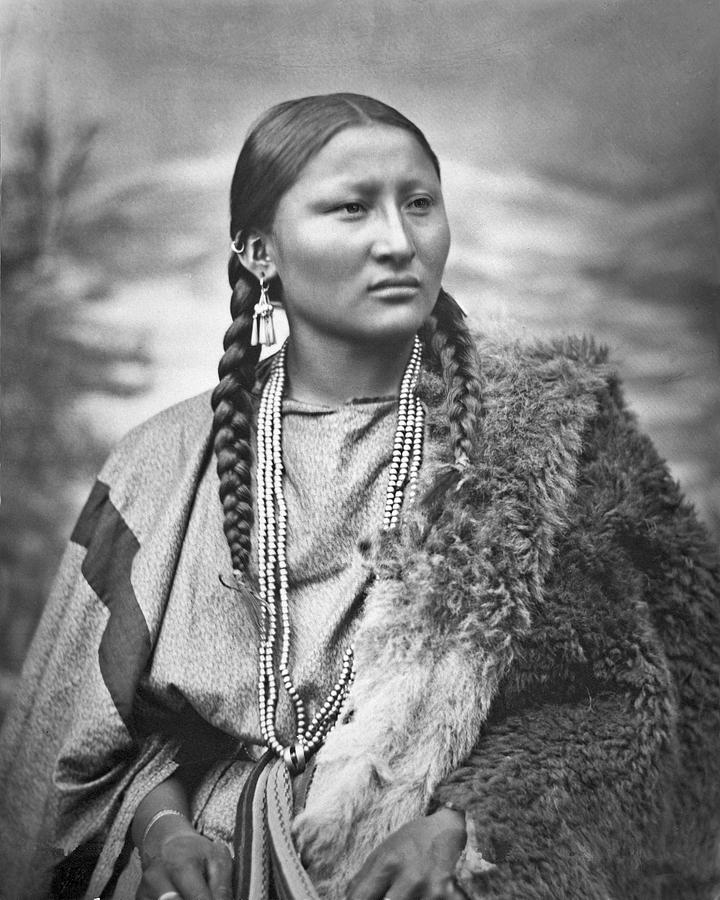
Conclusion
The history of the West has been a long one. First, the Native Americans were the original inhabitants of the Americas. They organized complex civilizations which included calendar systems, large structures, and trading systems. There were the Mound builders of North America and the Olmecs of Mexico. There were the Aztecs and the Navajo. As time went on, European explorers came into the Americas. Over the course of many centuries, many Europeans utilized theft, genocide, and murder against Native American peoples. It became so back that more than 90 percent of the Native American inhabitants of the Americas were exterminated by terrorists. Yet, the Native Americans continued to fight back in the West for their freedom. African slaves were forced to live in the West too. After the Civil War, black people traveled into the West for economic opportunities and to live a better life from the Jim Crow South. Many black people were frontiers people, ranchers, business owners, civil rights activists, cowboys, cowgirls, and other citizens in the West. The West grew by migration and technological development. Many Chinese Americans were involved in constructing the Transcontinental Railroad despite racism and discrimination. Native Americans fought for liberation in diverse civil rights organizations too. Movies depicted the West in whitewashed terms and in more accurate terms. The history of the West is not simplistic. It is complex, nuanced, and it encompasses a diversity of ethnic groups, creeds, and sexes. The frontier West taught us about the importance of respecting tolerance and standing up against any injustice. It showed the world that American history is a constant struggle among those who desire the status quo and those who want the Dream of freedom to be made real for all. The frontier West has captivated the imagination of many and spurring debates to this very day. Therefore, we learn lessons about the past, so we can make a better present and future.
By Timothy
No comments:
Post a Comment